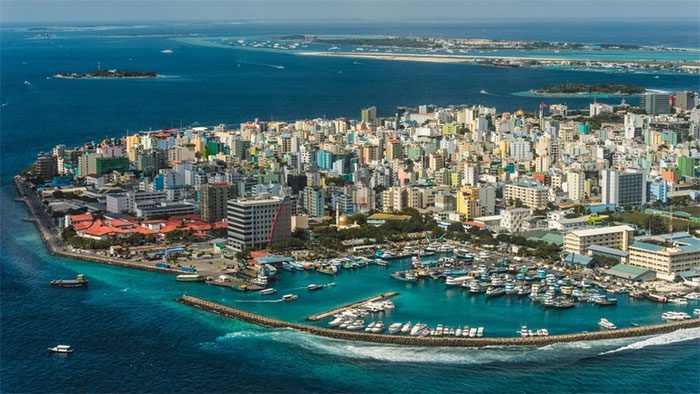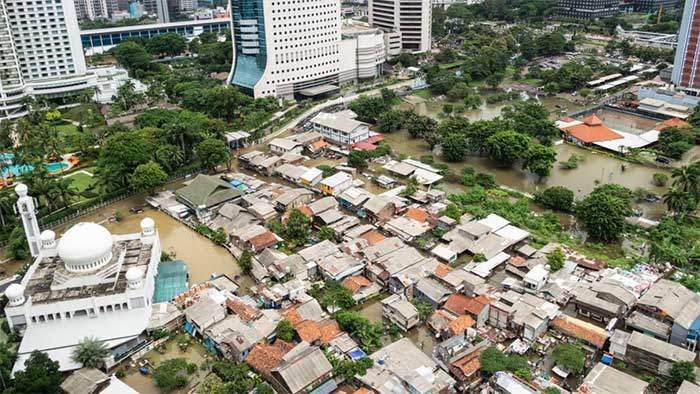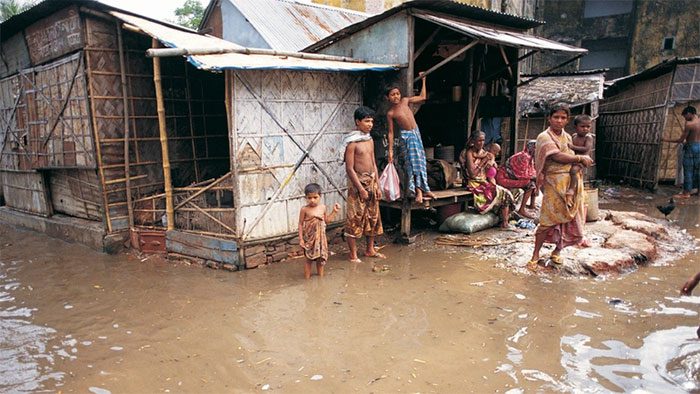In light of the impacts of global warming, sea levels are rising rapidly, posing a global threat.
Rising Sea Levels – A Global Threat
According to the National Oceanic and Atmospheric Administration (NOAA), the rate of sea level rise has more than doubled, increasing from 1.4 mm per year—the baseline rate in the 20th century—to 3.6 mm per year between 2006 and 2015.
NOAA predicts that by the beginning of the next century, sea levels could rise by at least 30 cm compared to levels recorded in 2000. Meanwhile, the Intergovernmental Panel on Climate Change (IPCC) estimates that by 2100, sea levels could rise between 40 and 63 cm.
At first glance, these figures may seem small. However, researchers warn that if sea levels rise to this extent, it could cause global devastation on an unpredictable scale.
According to a 2019 study published in Nature Communications, around 250 million people across continents could be “directly affected” by 2100. Notably, some cities, states, or even entire nations could be completely wiped out due to rising sea levels.
Which Countries Are Most Affected?

Rising sea levels threaten Male, the capital of Maldives. (Photo: Getty Images).
According to the Union of Concerned Scientists (UCS), the Maldives, consisting of 1,200 small coral islands and home to about 540,000 people, may be the first country to be affected by rising sea levels, as its average elevation is only 1 meter above sea level. They predict that the Maldives could lose about 77% of its land area by 2100.
Another country with an extremely low average elevation, at just 1.8 meters above sea level, is Kiribati, which could also face similar circumstances, with two-thirds of its area disappearing.
Previously, a 2016 study published in Environmental Research Letters reported that rising sea levels had led to the disappearance of at least 5 “vegetated reef islands”, which were once part of the Solomon Islands.
Additionally, densely populated countries are also likely to be affected by rising sea levels, including China, with 43 million people living in coastal areas, Bangladesh, where 32 million people will be at risk, and India, with 27 million people.
Many major cities are at serious risk of flooding, including Jakarta, the capital of Indonesia.
For a long time, Jakarta, home to about 10 million residents, has been dubbed the “fastest sinking city in the world”, with an average sinking rate of 5 to 10 cm per year due to erosion. Combined with rising sea levels, this factor has created a recipe for disaster.

A flooded street in a poor neighborhood in downtown Jakarta, Indonesia (Photo: Getty Images).
According to the World Economic Forum, much of Jakarta could be submerged by water by 2050. The situation in Jakarta is so dire that the government is planning to relocate the capital of Indonesia to Nusantara, a city to be built on the eastern coast of Borneo, about 2,000 km from Jakarta.
Not only Jakarta, but other cities like Dhaka, Bangladesh (population 22.4 million); Lagos, Nigeria (population 15.3 million); and Bangkok, Thailand (population 9 million) could also be completely submerged or have large areas rendered unusable.
In the United States, New York City is at the highest risk of experiencing rising sea levels. The city’s vulnerability to flooding was clearly seen in 2012 when it was heavily affected by Hurricane Sandy.
At that time, at least 43 people in the city lost their lives due to the aftermath of the superstorm, with around a quarter of a million vehicles destroyed and total damages amounting to at least $32 billion.
Additionally, Florida is also one of the areas most severely affected.
How Are People Coping?

By 2100, in Bangladesh, 32 million people will face significant issues related to rising sea levels (Photo: Getty Images).
Of course, a crucial factor in determining whether a city or country can disappear is its ability to address issues and develop long-term defensive capabilities.
Gerd Masselink, a professor of coastal geology at the University of Plymouth, UK, believes that whether cities or countries disappear depends on how we are responding to this threat.
For instance, Professor Masselink points out that much of the Netherlands is below sea level but has not disappeared or suffered severe damage because the Dutch have effectively built and maintained their coastal defense systems.
“A low-lying country that is politically stable and prosperous can remain stable for decades to come, but a low-lying country that is unstable and impoverished will not be able to hold onto its land,” Professor Masselink stated.



















































